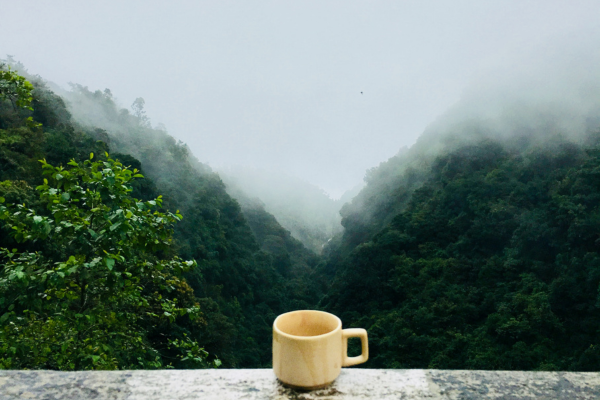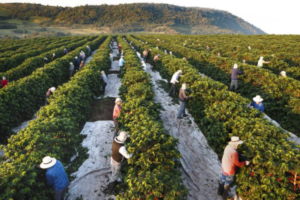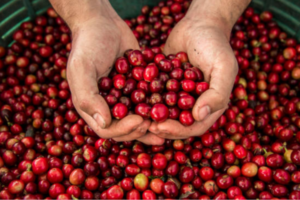Introduction:
Coffee, a beverage cherished worldwide, holds a rich tapestry of history woven into its aroma and taste. From its mystical origins to its global proliferation, coffee has influenced cultures, economies, and even revolutions. In this article, we embark on a journey through time, exploring the intertwining relationship between coffee and history, uncovering its profound impact on societies across the globe.
Origins of Coffee:
The story of coffee begins centuries ago in the ancient forests of Ethiopia, where legend has it that a goat herder named Kaldi discovered the energizing effects of coffee beans after noticing his goats becoming remarkably lively upon consuming them. This serendipitous encounter marked the dawn of coffee’s journey through history. From Ethiopia, coffee cultivation spread to the Arabian Peninsula, where it became an integral part of social and religious customs.
The Rise of Coffee Houses:
During the Islamic Golden Age, coffee houses, known as qahveh khaneh, emerged as vibrant centers of intellectual exchange. These establishments served as gathering places for scholars, merchants, and travelers, fostering discussions on literature, politics, and philosophy. With the rise of coffee houses in cities like Damascus, Baghdad, and Istanbul, coffee became synonymous with intellectual pursuits, shaping the cultural landscape of the Middle East.
Colonial Expansion and Coffee Trade:
The 15th century witnessed the expansion of coffee cultivation beyond the Arabian Peninsula, as European colonial powers sought to establish trade routes to source this coveted commodity. Coffee plantations flourished in regions with suitable climates, such as the Caribbean, South America, and Southeast Asia. The transatlantic slave trade fueled the labor-intensive cultivation of coffee in colonies like Brazil, leading to significant economic growth for colonial powers.
Coffee’s Influence on Art and Literature:
Throughout history, coffee has served as a muse for artists and writers, inspiring some of the most celebrated works of art and literature. From the vivid cafe scenes painted by renowned artists like Vincent van Gogh and Edward Hopper to the evocative prose penned by writers such as Honore de Balzac and Agatha Christie, coffee has been a recurring motif, symbolizing creativity, introspection, and social interaction. The aroma of freshly brewed coffee and the ambiance of bustling cafes have provided the backdrop for countless masterpieces, immortalizing the allure of this beloved beverage in the annals of culture.
Coffee and Revolution:
Coffee houses played a pivotal role in shaping public discourse and fostering revolutionary ideas during the Age of Enlightenment. In 17th and 18th century Europe, coffee houses became hubs of political debate and social activism, providing a platform for intellectuals to challenge established norms and advocate for societal change. The French Revolution, fueled in part by discussions held in Parisian cafes, exemplifies the transformative power of coffee as a catalyst for revolution.
Industrialization and Mass Consumption:
The Industrial Revolution heralded a new era of mass production and consumption, democratizing access to coffee across social classes. Innovations in coffee processing and brewing techniques, such as the invention of the espresso machine, revolutionized the way coffee was enjoyed. Coffee became ingrained in daily rituals, from the morning cup that kick-starts the day to the afternoon pick-me-up during work breaks, shaping modern lifestyles around the world.
Coffee Culture in the Modern Era:
In the 20th and 21st centuries, coffee culture experienced a renaissance, marked by the emergence of specialty coffee shops and artisanal roasters. Consumers developed a heightened appreciation for single-origin beans, direct trade practices, and sustainable farming methods. The Third Wave coffee movement prioritized quality, traceability, and ethical sourcing, challenging traditional notions of coffee consumption and fostering a deeper connection between producers and consumers.
Expansion:
Coffee’s Influence on Art and Literature:
Throughout history, coffee has served as a muse for artists and writers, inspiring some of the most celebrated works of art and literature. From the vivid cafe scenes painted by renowned artists like Vincent van Gogh and Edward Hopper to the evocative prose penned by writers such as Honore de Balzac and Agatha Christie, coffee has been a recurring motif, symbolizing creativity, introspection, and social interaction. The aroma of freshly brewed coffee and the ambiance of bustling cafes have provided the backdrop for countless masterpieces, immortalizing the allure of this beloved beverage in the annals of culture.
Coffee and Globalization:
The advent of globalization in the late 20th century further accelerated the spread of coffee culture, as multinational corporations like Starbucks transformed coffee consumption into a global phenomenon. The proliferation of coffee chains and franchises brought the familiar taste of espresso, cappuccino, and latte to every corner of the globe, homogenizing coffee culture in the process. However, globalization also facilitated the exchange of coffee traditions and knowledge, enabling consumers to explore diverse coffee varieties and brewing methods from around the world.
Environmental Challenges and Sustainability:
Despite its cultural significance and economic importance, the coffee industry faces numerous environmental challenges, including deforestation, soil degradation, and water pollution. Climate change poses a particularly grave threat to coffee cultivation, as rising temperatures and erratic weather patterns disrupt growing conditions and increase the prevalence of pests and diseases. In response, stakeholders across the coffee supply chain are embracing sustainable practices, such as agroforestry, organic farming, and water conservation, to mitigate environmental impact and ensure the long-term viability of coffee production.
The Future of Coffee:
As we look to the future, the trajectory of the coffee industry is shaped by ongoing technological advancements, shifting consumer preferences, and evolving sustainability practices. Innovations in genetic research, agronomy, and processing techniques hold promise for improving coffee quality, enhancing yield resilience, and mitigating climate-related risks. Meanwhile, changing consumer demographics and preferences are driving demand for innovative coffee products, such as cold brew, nitro coffee, and functional beverages infused with botanicals and superfoods.
Conclusion:
Coffee’s journey through history is a testament to its enduring allure and cultural significance. From its humble beginnings in the forests of Ethiopia to its global prominence today, coffee has transcended geographical boundaries, societal divisions, and historical epochs. As we savor each sip of this aromatic elixir, let us not only enjoy its rich flavors but also reflect on the stories it carries—the stories of innovation, trade, revolution, and human connection that have shaped our world. In coffee, we find not just a beverage but a source of inspiration, forging connections across time and space, reminding us of the profound impact of history on our daily li In conclusion, coffee’s journey through history is a testament to its resilience, adaptability, and enduring appeal. From its humble origins in the highlands of Ethiopia to its status as a global commodity consumed by billions, coffee has left an indelible mark on human civilization.



